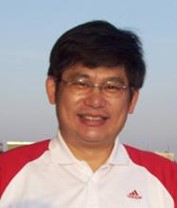Scientific Program

Shien-Kuei Liaw
National Taiwan University of Science and Technology, Taiwan
Title: Environmental factors impacts to bidirectional optical wireless communication
Biography:
Shien-Kuei Liaw received double doctorate from National Chiao-Tung University in photonics engineering and from National Taiwan University in mechanical engineering, respectively. He owned six U.S. patents and coauthored 250 journal articles and international conference papers. He serves as an Associate Editor for a SCI journal. Prof. Liaw was Directors of the Optoelectronic Center and Technology Transfer Center of National Taiwan University of Science and Technology (NTUST). Currently, Prof. Liaw is a distinguished Professor of NTUST, President of the Optical Society (OSA) Taiwan Chapter and Secretary-General of Taiwan Photonic Society. His research interests are in fiber optical sensing and optical communication.
Abstract
In this talk, high-speed optical wireless communications (OWC) technologies will be reviewed and introduced. The first scheme is bi-directional short-range free-space optical communication with 2x4x10 Gb/s capacity in wavelength division multiplexing (WDM) channels short transmission distance. The single-mode-fiber is used in the optical terminals for both optical transmitting and receiving functions. The measured power penalties for bi-directional, WDM OWC are less than 0.8 dB and 0.2 dB, compared with the back-to-back link and uni-directional transmission system, respectively. The second scheme is hybrid optical fiber and OWC link in outdoor environments such as cross bridge or inter-building system. A sensor head is used for monitoring the condition of bridge, and in the case of the bridge being damaged the transmission path could be changed from fiber link to OWC link to ensure data link connectivity. In both cases, the single-mode fiber are used in the optical terminals for both optical transmitting and receiving functions. The influences of environmental factor including window glasses, air turbulence and rainfall will also be addressed. The colorless and colored window glasses introduce losses under various incident angles, but did not induce substantial power penalties. The air turbulence induces extra transmission loss and instability in the received power. Raindrops are the most influential environmental factor. The bit error rate (BER) test shows that raindrops result in a seriously impaired BER to interrupt the transmission instantaneously. After appropriate performance improvement, these proposed transmission structures show potential applications for outdoor transmission under various natural weather conditions.
- Optics and Biomechanics
- Modern Optics
- Interferometry
- Optical Metrology
- SDM and Beyond
- Optical Imaging Systems and Machine Vision
- Optical Computing
- Micro-Opto-Electro-Mechanical Systems (MOEMS)
- Microscopy and Adaptive Optics
- Lasers in Medicine and Biology
- Engineering Applications of Spectroscopy
- Applications and Trends in Optics
- Optoelectronic Devices, Photonics, Nanophotonics and Biophotonic
- Organic Optoelectronics and Integrated Photonics
- Optical Communications, Switching and Networks
- High-speed Opto-electronic Networking

